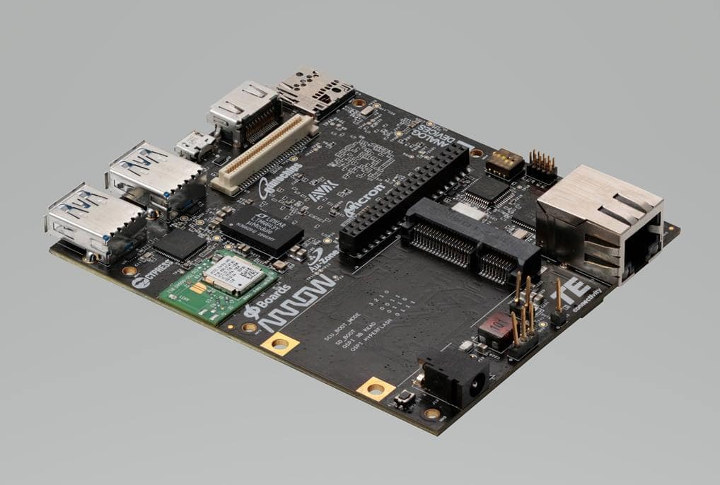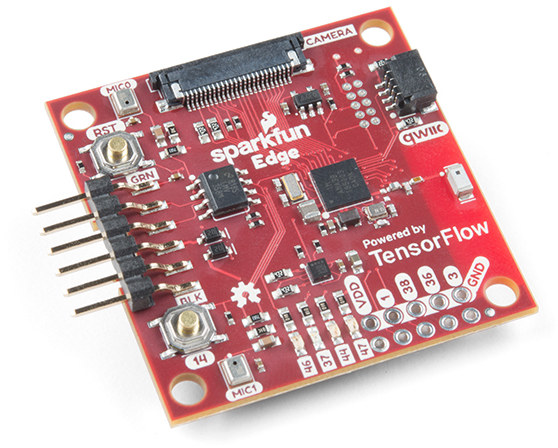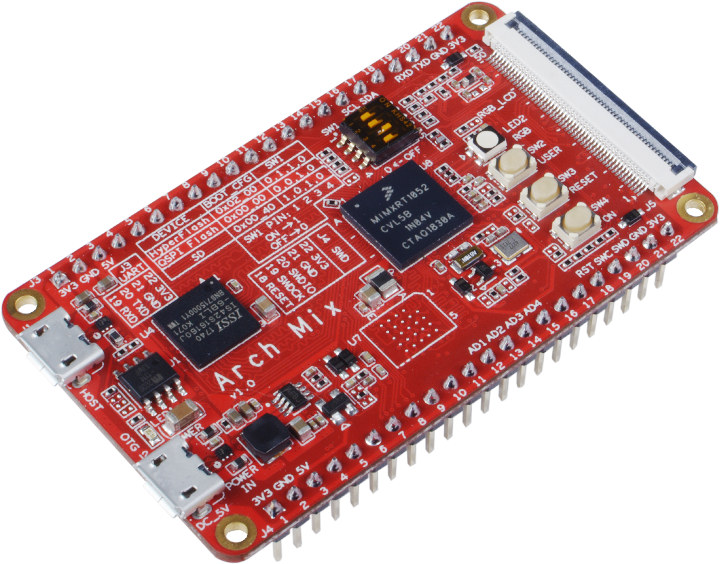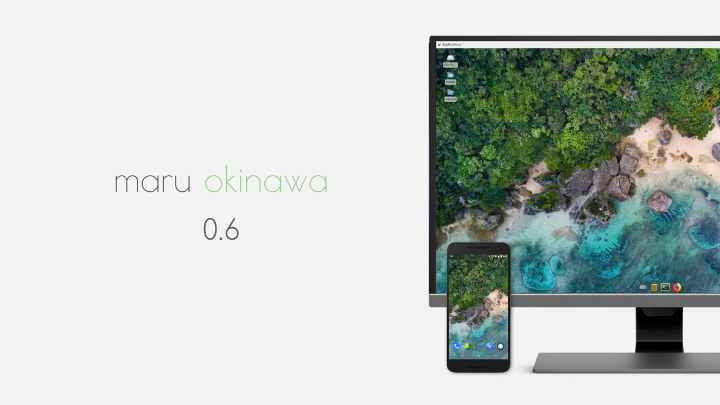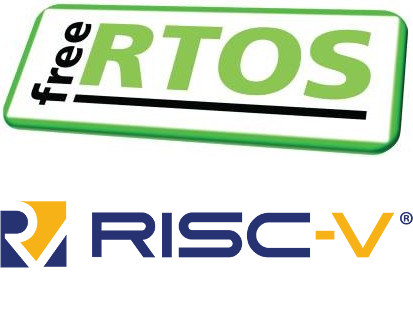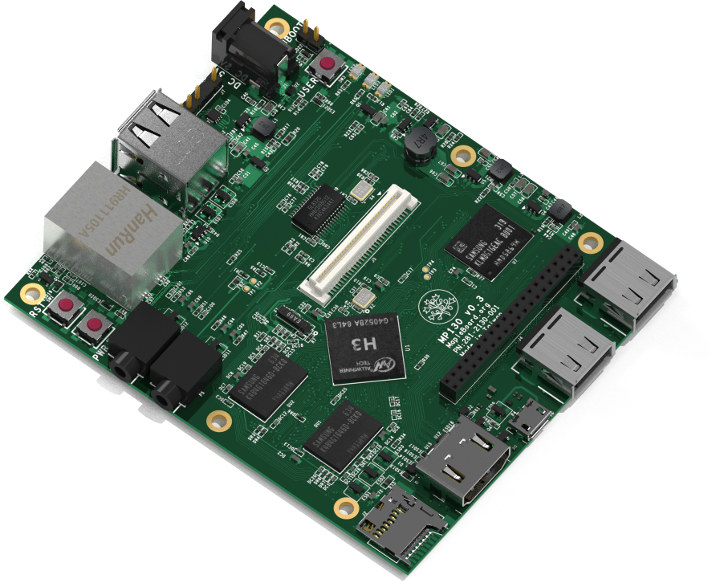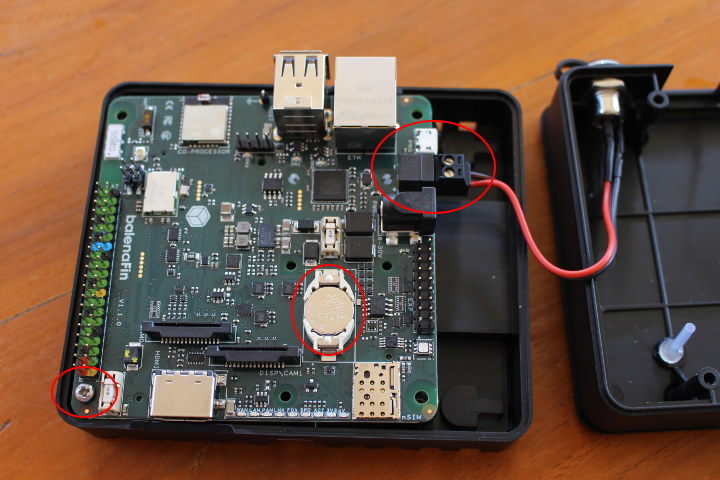GPD XD Plus handheld Android game console launched about nearly one year ago with a MediaTek MT8176 hexa-core Arm Cortex-A72/A53 processor, and a 5.0″ display, and is now sold for under $210. But there’s now another portable game console that appears heavily inspired from GPD design, but featuring a low end MediaTek MT8163 quad core Cortex A53 processor instead, as well as a slightly larger 5.5″ display. Meet POWKIDDY X18. POWKIDDY X18 hardware specifications: SoC – MediaTek MT8163 quad core Cortex A53 processor @ 1.3GHz with Arm Mali-T720 GPU System Memory – 2GB LPDDR3 Storage – 16GB eMMC flash, microSD card Display – 5.5″ IPS Screen with 1280 x 720 resolution, 5-point capacitive touchscreen Video Output – HDMI port Connectivity – WiFi 4 802.11 a/b/g/n, Bluetooth: 4.0 USB – 1x micro USB port (for charging only?) Buttons – Power button, D-Pad, A/B/X/Y buttons, L1/L2/R1/R2, left & right joysticks, Start & […]
NXP i.MX 8X/8M based AI-ML and Thor96 Boards Target AI and IoT Applications,
We’ve already covered several 96boards platforms announced at Embedded World 2019, but we’re not quite done yet, as Arrow Electronics also introduced two NXP i.MX 8X/8M powered 96Boards CE Extended development boards with AI-ML board equipped with i.MX 8M quad core Arm Cortex-A35 processor coupled with 2GB RAM, an mPCIe slot for cellular connectivity, and Thor96 SBC featuring NXP i.MX 8M processor with 2GB RAM as well, but also two HDMI ports, a Thread and Zigbee module, and more. Arrow AI-ML Board AI-ML key features and specifications: SoC – NXP i.MX 8X quad core Arm A35 processor @ 1.2 GHz, Cortex-M4F real-time core @ 266 MHz, Tensilica HiFi 4 DSP Core, GC7000 Lite 3D GPU with 4x Vec4 Shaders with 16 Execution Units System Memory – 2 GB LPDDR4 @ 1,600 MHz Industrial Temp by Micron Storage – Micro SD card slot Video Output / Display Interface HDMI Output Dual […]
$15 Sparkfun Edge Board Supports Tensorflow Lite for Microcontrollers
The 2019 TensorFlow Dev Summit is now taking place, and we’ve already covered the launch of Google’s Coral Edge TPU dev board and USB accelerator supporting TensorFlow Lite, but there has been another interesting new development during the event: TensorFlow Lite now also supports microcontrollers (MCU), instead of the more powerful application processors. You can easily get started with Tensorflow Lite for MCU with SparkFun Edge development board powered by Ambiq Micro Apollo3 Blue Bluetooth MCU whose ultra-efficient Arm Cortex-M4F core can run TensorFlow Lite using only 6uA/MHz. SparkFun Edge specifications: MCU – Ambiq Micro Apollo3 Blue 32-bit Arm Cortex-M4F processor at 48MHz / 96MHz (TurboSPOT) with DMA, 1MB flash, 384 KB SRAM, 6uA/MHz power usage, Bluetooth support. Connectivity – Bluetooth LE 5 (on-chip) + Bluetooth antenna Camera – OV7670 camera connector Audio – 2x MEMS microphones with operational amplifier Sensor – STMicro LIS2DH12 3-axis accelerometer Expansion – Qwiic connector, […]
$30 Arch Mix Development Board Features NXP i.MX RT1052 Crossover Processor
NXP i.MX RT Arm Cortex-M7 crossover processors are supposed to fill the gap between microcontrollers and more powerful application processors thanks to real-time capabilities, and a higher CPU frequency. We’ve already covered several i.MX RT1050 series platforms including NXP’s own evaluation board and Forlinx OK1052-C development kit comprised of a carrier board and an i.MX RT1052 system-on-module. But if you’d like to experiment with NXP i.MX RT processor using a cheaper, smaller, and easier to purchase development platform, Seeed Studio has started to sell Arch Mix development board for $29.90 plus shipping. Arch Mix board specifications: SoC – NXP i.MX RT1052 Arm Cortex-M7 processor @ up to 528MHz System Memory – 32MB SDRAM Storage – Optional 64MB Hyperflash, 8MB QSPI flash, microSD card socket Display I/F – RGB LCD interface USB – 1x micro USB 2.0 host port, 1x USB OTG port for data and power Expansion Headers – 2x […]
Maru 0.6 Combines LineageOS & Debian 9, Supports Wireless Desktop Streaming
Maru OS was first unveiled in 2016 as a smartphone operating system that relies on Android on the go, and Debian while connected to an HDMI display, and Bluetooth keyboard and mouse. The downside was that it only works on Nexus 5 at the time, but Preetam D’Souza open sourced his solution, and more people joined the project to expand the number of supported hardware platforms. I had not heard about the project for a while, but Maru 0.6 Okinawa has just been released with the three main changes being the switch from Android 6.0.1 AOSP to a custom version of LineageOS based on Android 8.1.0 to support a broader range of devices, the upgrade from Debian 8 to Debian 9, and support for wireless desktop streaming meaning you don’t need a phone with HDMI / MHL support anymore. The reliance on AOSP meant Maru used to only work on […]
FreeRTOS Kernel Now Supports RISC-V Architecture
FreeRTOS is one of the most popular operating systems found in embedded systems, and RISC-V open architecture is getting more and more traction, so it should come as no surprise that Amazon has now added RISC-V to their recently acquired FreeRTOS kernel. Jeff Barr, Chief Evangelist for AWS, explains both 32-bit and 64-bit RISC-V cores are supported, and several RISC-V boards are already supported out of the box: The kernel supports the RISC-V I profile (RV32I and RV64I) and can be extended to support any RISC-V microcontroller. It includes preconfigured examples for the OpenISA VEGAboard, QEMU emulator for SiFive’s HiFive board, and Antmicro’s Renode emulator for the Microchip M2GL025 Creative Board. There’s no a lot of information on Amazon announcement post, but FreeRTOS website has plenty of resources to help you get started with RISC-V. The page also lists some of the key features of the RISC-V port: Supports machine […]
MapleBoard MP130 Allwinner H3 Board Almost Follows 96Boards CE Extended Form Factor
There are so many Allwinner H3 SBCs or development boards that new ones are often uninteresting, but with the release of Linux 5.0, I discovered a new board that I had never heard of: MapleBoard MP130. The board is equipped with 1GB RAM, Fast Ethernet, four USB ports, and various I/O expansion headers. But the form factor looked familiar, and it seems compliant with 96Boards CE Extended, except for some reasons they decided to swap the low speed and high speed connectors, so I doubt the board is compatible with any of the 96Boards mezzanines. MapleBoard MP130 specifications: SoC – Allwinner H3 quad core Arm Cortex-A7 processor at up to 1.3GHz with Mali-400MP2 GPU System Memory – 1GB DDR3L 1600 MHz Storage – 8GB eMMC 4.41 flash, microSD slot Video Output – HDMI 1.4 output with HDCP1.2 Connectivity – 10/100Mbps Ethernet Audio 2-ch 92dB ADC, 2-ch 100dB DAC, I2S/PCM Interface, […]
balenaFin Developer Kit Review – Part 1: Unboxing and Assembly Instructions
Balena launched balenaFin 1.1 at the end of last month. The board is a professional carrier board for Raspberry Pi Compute Module 3 / 3+ Lite that includes support for variable voltage power input, optional PoE, industrial eMMC flash storage, a real-time Arm Cortex-M4 core via Artik-020 module, and more. Somehow a balenaFin 1.1 developer kit ended up in my home, and I’ll play with it in several weeks, but in the first part of the review, I’ll just check out the content of the package, and show how to assemble the kit. BalenaFin 1.1 Developer Kit Unboxing The local courier brought a largish balena Fin package. which contained a smaller balenaFin package, and the actual developer kit. Everything is nicely packaged in the box with the part related to power supply in a white box, a small opening for smaller accessories and Raspberry Pi Compute Module 3, as well […]



